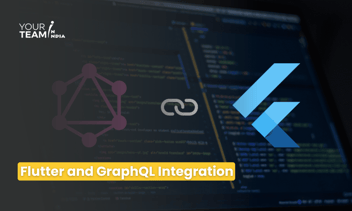Quick Summary: Dive into the world of GraphQL with NestJS in this comprehensive guide. Learn the fundamentals, setup, and advanced techniques to seamlessly integrate GraphQL into your NestJS applications for efficient and scalable APIs.
Introduction
GraphQL has gained significant popularity for its flexibility and efficiency in querying APIs. When combined with NestJS, a powerful Node.js framework, it provides a robust solution for building scalable and maintainable server-side applications. In this article, we'll delve into the fundamentals of GraphQL and demonstrate how to integrate it seamlessly into a NestJS application.
Understanding GraphQL
GraphQL is a query language for your API that allows clients to request the data they need exactly. Unlike traditional REST APIs, which often receive more or less data than necessary, GraphQL empowers clients to specify their data requirements precisely.
At its core, GraphQL revolves around three main concepts:
- Schema: Specifies the data structure that clients can access and the query language for that structure.
- Queries: Requests from clients to obtain particular information.
- Mutations: The client requests to change server-side data.
Transform Your Vision into Reality with Expert NestJS Developers!
Unlock the full potential of your web applications by hiring our seasoned NestJS developers.
Getting NestJS Started
A progressive Node.js framework called NestJS makes it easy to create dependable, scalable, and efficient server-side apps. It uses dependency injection, decorators, and TypeScript to provide a stable architecture for developing server-side applications.
Let's start by making a new NestJS project:
GraphQL Integration with NestJS
GraphQL and NestJS may be seamlessly integrated via the ‘@nestjs/graphql’ package from NestJS. Now let's install it:
Next, a GraphQL module will be created:
Using our code as a basis, the 'autoSchemaFile' option creates a GraphQL schema automatically.
GraphQL Resolvers: A Definition
The task of retrieving the data that clients have requested falls to resolvers. Let's build a basic resolver:
Launching the NestJS Programme
Now that our resolver and GraphQL module are set up, let's launch our NestJS application:
GraphQL Data Querying:
Our server is now up and running, and we can query it using GraphQL. To communicate with our API, we can use programs like Postman or GraphQL Playground.
This query will return:
Advantages:
- Flexibility in Data Fetching: GraphQL allows clients to request only the data they need, reducing over-fetching and under-fetching issues commonly associated with REST APIs. This flexibility improves network efficiency and client-side performance.
- Strongly Typed Schema: With GraphQL, you define a schema that precisely describes the data available in your API. In NestJS, this schema can be typed using TypeScript, providing robust type checking and enabling early error detection during development.
- Efficient Data Aggregation: GraphQL enables clients to request multiple resources in a single query, reducing the number of round trips to the server. This improves performance, especially in scenarios where multiple related pieces of data are needed.
- Versioning and Evolution: GraphQL supports seamless versioning and evolution of APIs without breaking existing clients. By adding new fields or types to the schema, you can introduce changes incrementally, ensuring backward compatibility and smooth transitions for clients.
- Developer Experience: NestJS's integration with GraphQL simplifies the development process by providing decorators, utilities, and tools for building GraphQL APIs. This reduces boilerplate code and speeds up development, leading to increased developer productivity.
Disadvantages:
- Complexity in Schema Design: Designing a GraphQL schema requires careful consideration of data relationships, types, and queries. Complex schemas can become challenging to manage and may require additional effort to maintain over time.
- Over-fetching and Under-fetching: While GraphQL reduces over-fetching and under-fetching compared to traditional REST APIs, inefficient queries can still lead to performance issues. Developers need to optimize queries and implement caching strategies to mitigate these concerns.
- Learning Curve: Adopting GraphQL, especially for developers unfamiliar with the technology, involves a learning curve. Understanding concepts such as resolvers, schema stitching, and GraphQL best practices requires time and effort.
- Performance Overhead: Compared to simple REST endpoints, GraphQL queries may impose a higher performance overhead due to the need for query parsing, validation, and execution. However, this overhead can be mitigated through optimizations such as query batching and caching.
- Caching and Authentication: Implementing caching and authentication mechanisms in GraphQL APIs can be more complex compared to REST APIs. Developers need to carefully consider caching strategies and authentication patterns to ensure security and performance.
Conclusion
Integrating GraphQL into NestJS brings numerous benefits, including flexible querying, strong typing, and improved developer productivity. While challenges such as schema design complexity and performance overhead exist, the advantages of precise data fetching, versioning support, and streamlined development outweigh these concerns. Overall, GraphQL in NestJS offers a modern and efficient approach to building scalable and maintainable server-side applications.
Get reliable, high-performance solutions. Hire Nest.js developers to enhance your team!







